Kids' B.A.S.E. & The Little School Hosts Fall Festival
- Details
- Hits: 4157
 Kids B.A.S.E. and the Little School (K.B.L.S.) hosted its first Fall Festival for K.B.L.S. families, alumni and friends on Saturday October 5. Over two hundred children and their families, as well as K.B.L.S. teachers and staff, participated in this free, fun-filled family day outside at K.B.L.S., which featured bounce castles, arts and crafts, face painting, tattoos, games, prizes, food, a DJ, games with K.B.L.S.'s Coach Steve, visits with Scarsdale Fire Fighters and a fire truck, a backhoe from Cum Laude Construction Group for children to sit on, and other activities graciously provided by K.B.L.S. enrichment providers Kids R Cookin', Beadz and Scarsdale Strings. The festival was planned by K.B.LS. parents and staff. Approximately seventy parents volunteered their time to run activities at the festival, most of them with their children.
Kids B.A.S.E. and the Little School (K.B.L.S.) hosted its first Fall Festival for K.B.L.S. families, alumni and friends on Saturday October 5. Over two hundred children and their families, as well as K.B.L.S. teachers and staff, participated in this free, fun-filled family day outside at K.B.L.S., which featured bounce castles, arts and crafts, face painting, tattoos, games, prizes, food, a DJ, games with K.B.L.S.'s Coach Steve, visits with Scarsdale Fire Fighters and a fire truck, a backhoe from Cum Laude Construction Group for children to sit on, and other activities graciously provided by K.B.L.S. enrichment providers Kids R Cookin', Beadz and Scarsdale Strings. The festival was planned by K.B.LS. parents and staff. Approximately seventy parents volunteered their time to run activities at the festival, most of them with their children.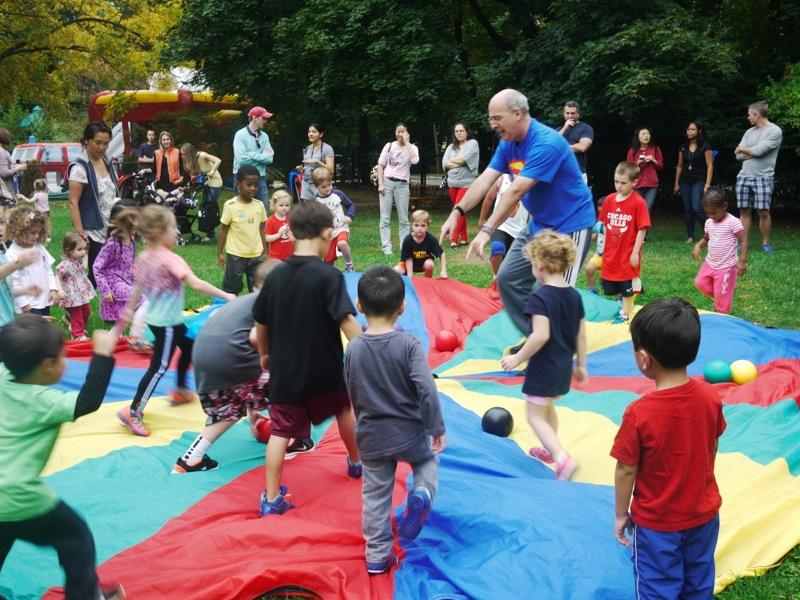
K.B.L.S. offers high quality educational, social, and care experiences possible for resident Scarsdale children from age 3 through Grade 6 under the leadership of Executive Director Deborah Fine and a Board of Trustees comprised of community residents. Kids' B.A.S.E. and The Little School are accredited by the National Association for the Education of Young Children, chartered by the NYS Board of Regents, and licensed by the NYS Office of Children and Family Services. K.B.L.S. offers year-round extended hours of operation to accommodate children and families through a range of programs including:
• The Little School: Scarsdale's premier preschool program with classes for 3s and 4s.
• Kids' B.A.S.E.: Before- and after-school enrichment and care programs for children in grades K-6.
• The Little School Summer Enrichment Camp: Full of fun learning experiences, swim instruction, crafts, sports, and daily swim.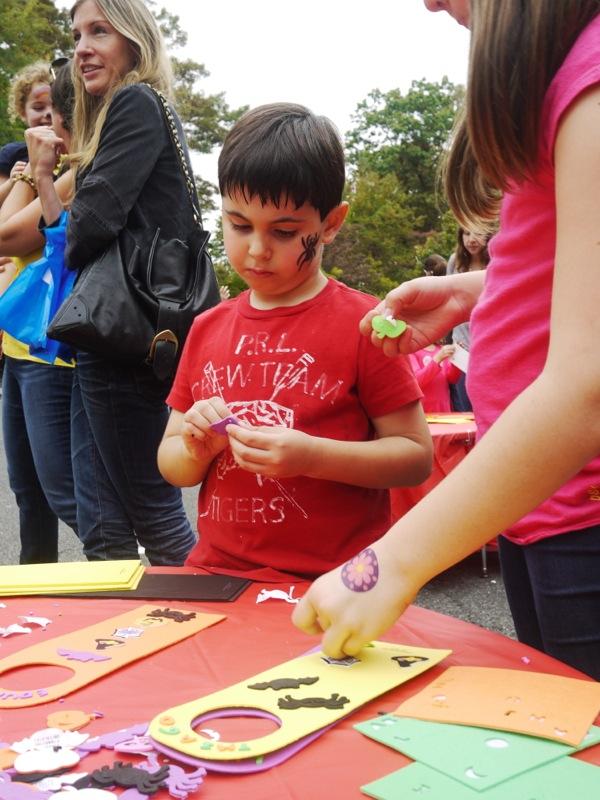 • Summer Set Before-and-After Camp Enrichment: Summer enrichment programming for children in grades K-5.
• Summer Set Before-and-After Camp Enrichment: Summer enrichment programming for children in grades K-5.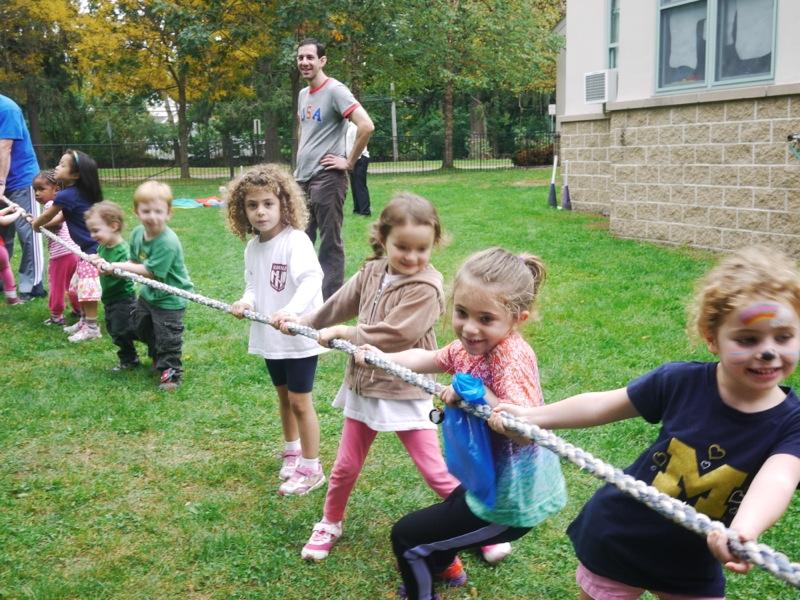
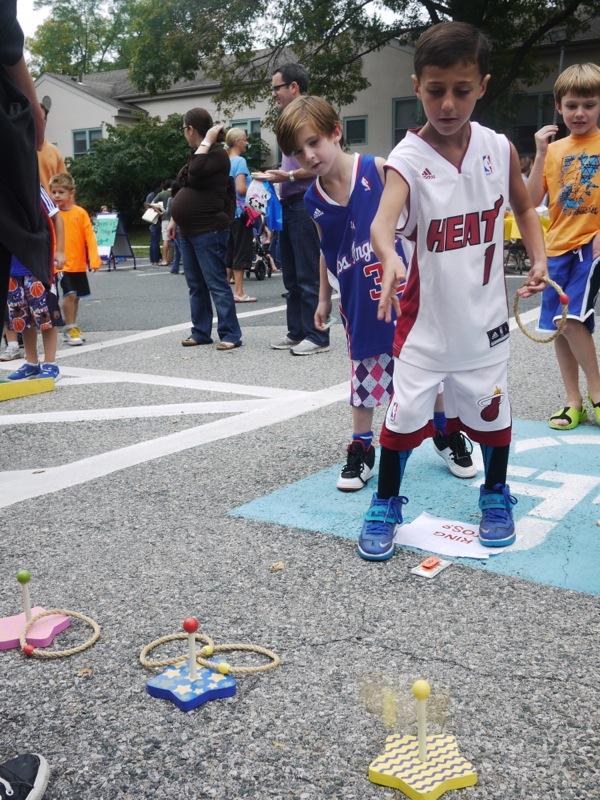
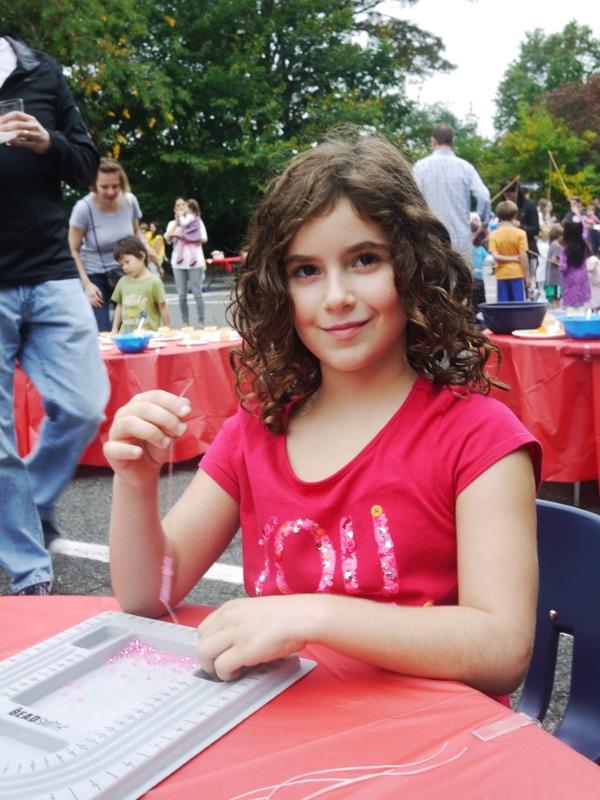
Closet Confidential - 3 Steps to Getting Your Closet Ready for the Change of Season
- Details
- Written by Jocelyn Kenner
- Hits: 3913
 Autumn has officially arrived and the crisp, cool mornings have us reaching for sweaters and socks instead of t-shirts and sandals. With the change of season, comes the need to rearrange and swap out the clothes in our closets. Follow these EASY steps to get your wardrobe through the transition.
Autumn has officially arrived and the crisp, cool mornings have us reaching for sweaters and socks instead of t-shirts and sandals. With the change of season, comes the need to rearrange and swap out the clothes in our closets. Follow these EASY steps to get your wardrobe through the transition.
Step #1
Gather 3-5 large shopping bags or boxes, a post-it pad, and a marker or pen. Label post-its as follows: OUT OF SEASON STORAGE*, DONATE, CLEAN/REPAIR. Stick a post-it on each bag and you are ready to go. I recommend listening to music you enjoy to help keep you happily entertained.
*you may need multiple post-its and bags for this category
Step #2
Go through your closet and pull out the warm weather clothes and shoes that you will not be wearing during the winter. As you remove each of these items, decide which bag it will go into. While most of your items will go in the bags labeled OUT OF SEASON STORAGE, some should not. This is an ideal time to decide what should be donated. How do you make that decision? Donate any items you did not wear this past season, no longer fit or flatter you, are stained or damaged beyond repair, or out of style. What about those items you hold onto year after year for sentimental reasons? You know the jumpsuit (with shoulder pads!) that once looked great on you and you wore on your honeymoon, but today you would never be caught dead wearing in public? My best advice is to take a photo of the sentimental item so you have a pictorial reminder before you donate it. If you have a substantial collection of similar type items that you just cannot part with (favorite old t-shirts, etc.), consider having them made into a quilt or memory blanket. A quick search online will show many companies that provide this service. Here is the bottom line, and if you remember nothing else, just remember this:
|
Your closet should be filled only with items you love to wear, are comfortable to wear and make you look and feel terrific! |
OK, so you have completed the hardest part.... weeding out what to keep in storage for next summer, what should be donated, and what needs to be cleaned/repaired. Great Job!! The next part is easy.....sorting!
Step #3
Start by sorting the clothes staying in the closet into categories: long pants, long sleeved shirts, sweaters, jackets, dresses, skirts, belts, scarves, pocketbooks, etc. Once this first round of sorting is completed do a second level of sorting within each category to sort items by color and/ or style. For example, sort out black pants from jeans, white shirts from colored prints, etc. Arranging clothes first by type and then by color helps you to quickly locate just what you need to complete an outfit. An added bonus is now you can see just how many pairs of black pants you own so the next time you go to buy a pair, you have a visual memory of your black pants inventory. I am a fan of The Clutter Diet's Simple Division® Garment Organizers (available on line or at the Container Store) for keeping your hanging clothes easily arranged in categories.
Use this same sorting approach with accessories (i.e. hang all black belts together, keep formal pocketbooks separate from everyday pocketbooks, etc.). Keeping accessories in clear containers allows you to easily identify them.
| Your closet should be filled only with items you love to wear, are comfortable to wear and make you look and feel terrific! |
Here are my last two pieces of advice...
Prime Real Estate: No, I don't mean ocean view, I am referring to the easy to reach, front and center part of your closet....this is prime real estate! Place the clothes you access most often in this area. If you wear suits, ties and pressed shirts 5 out of 7 days a week, these items should be front and center so they are easy to access.
Skinny Hangers: While I could write for days about the various storage items available on the market for closet storage, an affordable and sensible accessory I recommend to everyone is to invest in skinny hangers. These are thin-profiled, velvet hangers that not only save you a ton of space in your closet, but also help silky clothes from slipping off the hanger.
One more time, here is the quintessential mantra for all closets:
|
Your closet should be filled only with items you love to wear, are comfortable |
Raising Awareness to Prevent Distracted Driving, One High School at a Time
- Details
- Written by Ori Zaff
- Hits: 3889
From Left to Right: Angela Manson, PTA President, Jacy Good, Lauren Pomerantz, Youth Outreach Worker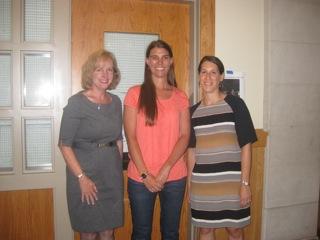
The speech was preceded by a quick introduction by Principal Kenneth Bonamo. To deter reckless behavior on the roads, Bonamo relayed statistics to the crowd about the percentage of teen deaths brought about by driving accidents (one third) and the increased risk teens face on the road. He told the attendees that on a campus with tight roads, pedestrians, and limited parking, there's the potential for driving accidents which prompted the school to hold explanatory meetings before allowing students to get their parking permits.
After Bonamo's introduction it was Jacy's turn. Jacy runs a movement with her college boyfriend and current fiancé, Steve Johnson to shed light on the frequent use of cellular devices while driving and to lead a social and cultural shift away from their use. Jacy grew up in Amish country but moved to New York after college. However, on her graduation day, as she drove back to her house in Pennsylvania, her life abruptly changed for the worse.
Jacy's memory cuts off at that point in the story and she showed a video of her fiancé to fill in the gap. That day Jacy had not been answering his calls or texts, and the next time he got a call from her it was from a medic. They reported that Jacy had been traumatically and critically injured, and that her parents were dead. Steve and Jacy's brother rushed over and waited for her to get out of an intensive surgery. Her chances of recovery were at a mere 10%. But after two weeksina coma, Jacy finally awakened. Broken bones and organ damage weren't the worst of it, Jacy had significant brain damage and couldn't (and still can't) move the left side of her body. She was barely conscious and unable to form memories, unable to understand her surroundings and living in her own world. "It still shocks me. It's still hard to believe how all of it could have happened in one day, driving back from my graduation ceremony nonetheless," said Jacy when asked about the period of time that was lost to her. After two months Jacy was brought to a rehabilitation facility to continue her recovery. Slowly but surely she was able to figure out that her parents were gone, her memory and her education were faded, and her physical and mental ability deteriorated. It was devastating to her and those close to her.
The devastating accident had occurred in rural Pennsylvania, just five minutes after Jacy and her parents left a gas station. At an intersection on a one-lane highway, an eighteen-year-old on his way to a Church camp reunion was on his phone. The young driver missed the fact that the light had changed due to his narrowed field of vision when driving distracted. A dairy truck, seeking to avoid collision with the young man's car, swerved into the lane of oncoming traffic, where Jacy and her parents were driving.
Luckily, a paramedic who lives in the house just across a field from the accident heard the collision. He rushed over, found the cars, and checked inside. Jacy's mother had not fastened her seatbelt and was killed just after impact. Her father's pulse was faint and he died almost immediately after being found. Jacy was still alive but unable to breathe. An ambulance quickly came to take her off to the nearest trauma center.
As she healed, Jacy struggled to cope and understand by doing research on distracted driving. She found that the brain's natural function of scanning to the sides and further down the road while driving are inhibited when using a mobile phone, even on Bluetooth. She found that although New York considers a collision like this manslaughter, Pennsylvania is far behind on drunk driving, texting, seatbelt, and traffic safety laws. The young man making a phone call was not prosecuted. "Even if you kill someone, there's no punishment, and it just seemed like there should have been something to do about it," said Jacy.
 Still in recovery, she went before the state and made an appeal to strengthen driving laws. She was denied. She tried several times and was repeatedly rejected. When she returned to New York, she began to work with Governor Cuomo, a major activist against texting and driving. Cuomo has special forces in place who patrol specifically to find violators of the distracted driving laws of New York. Jacy's work escalated and she was soon involved in speeches at the United Nations, even working alongside Secretary General Ban Ki-moon. She has worked on awareness projects with Oprah Winfrey and with her fiancé Steves runs a foundation called Hang Up and Drive. "It's the only thing I can be doing," says Jacy. "The accident was the worst day of my life and I had to make something positive out of this. If I could have my life back, I would of course take it. But I've been handed these cards and I want to play them my best."
Still in recovery, she went before the state and made an appeal to strengthen driving laws. She was denied. She tried several times and was repeatedly rejected. When she returned to New York, she began to work with Governor Cuomo, a major activist against texting and driving. Cuomo has special forces in place who patrol specifically to find violators of the distracted driving laws of New York. Jacy's work escalated and she was soon involved in speeches at the United Nations, even working alongside Secretary General Ban Ki-moon. She has worked on awareness projects with Oprah Winfrey and with her fiancé Steves runs a foundation called Hang Up and Drive. "It's the only thing I can be doing," says Jacy. "The accident was the worst day of my life and I had to make something positive out of this. If I could have my life back, I would of course take it. But I've been handed these cards and I want to play them my best."
The general consensus from seniors after the presentation was one of a new appreciation for the dangers of distracted driving. "It was a breathtaking story," said Jake Schechner at the conclusion of the presentation. "It was truly touching, she's such an inspiration," elaborated Kate Howard. "It was good that they tackled an issue less obvious than drinking and driving," said Chris D'Silva I learned more here than I expected.
Jacy drove home the message that what happened to her can happen to anyone unless awareness is spread everywhere. She called upon the students to make a  commitment to her and to themselves to be safe drivers and to make distracted driving as socially unacceptable as drunk driving, because one out of four crashes occur as a result of cell phone usage on the roads. Jacy urged students to realize that they are not invincible; accidents can happen to anyone, no matter how well they know the roads and no matter how safely they drive.
commitment to her and to themselves to be safe drivers and to make distracted driving as socially unacceptable as drunk driving, because one out of four crashes occur as a result of cell phone usage on the roads. Jacy urged students to realize that they are not invincible; accidents can happen to anyone, no matter how well they know the roads and no matter how safely they drive.
Jacy's story demonstrated that texting and distracted driving can cause unbearable pain and suffering that ripples outwards to family and friends and lasts a lifetime. As Steve said in the concluding video of the presentation, "You don't know if you're saving a life, but you sure as hell know if you do the opposite."
Photo Credit (Top Photo): Ronny Hersch
Contributer Ori Zaff is a Scarsdale High School senior in the A-School.
Halloween Window Painting and Parade in Scarsdale
- Details
- Hits: 3130
 The Scarsdale Parks and Recreation Department will be holding their Annual Halloween Window Painting Contest and Parent/Child Halloween Window Painting program on Sunday, October 20th from 9:00 am – 4:00 pm. All youths who reside in or attend public or private schools in Scarsdale in grades 1 – 10 are eligible to participate in this event.
The Scarsdale Parks and Recreation Department will be holding their Annual Halloween Window Painting Contest and Parent/Child Halloween Window Painting program on Sunday, October 20th from 9:00 am – 4:00 pm. All youths who reside in or attend public or private schools in Scarsdale in grades 1 – 10 are eligible to participate in this event.
After school on October 31st, there will be a Costume Parade held in the Village streets by Chase Park. The parade line up begins at 3:30 pm in front of Chase Park. The parade will start at 3:45 pm. Special entertainment and refreshments will be provided after the parade. All Pre-K and Elementary School children are welcome to participate in the costume parade. Please note that the parade will not be held on window painting day as in past years.
Deadline to participate in the Halloween Window Painting programs is Thursday, October 10th.
As windows are limited, registration is on a first-come, first-served basis. Please register online at http://reconline.scarsdale.com.
For questions, call the Recreation Department at 722-1160.
How to Help Young Children Transition from Home to Preschool
- Details
- Written by Dr. Michelle Sanders
- Hits: 3715
 It's the beginning of the school year. You've taken care of every item on the mental checklist you've been carrying around in your head (or if you're like me it needs to be written down!) School orientation-check, new clothes-check, supplies-check, first day of school outfit-check, pictures taken-check. If you're a parent who has completed the copious "to do" list and still find yourself in the school parking lot with a screaming child who refuses to leave his car seat, this article is for you. As a child psychologist and mother of twins, I can assure you that separation related to a school setting can present many challenges, even in the most optimal circumstances. Here is some vital information to make the transition from home to school less stressful for you and your child:
It's the beginning of the school year. You've taken care of every item on the mental checklist you've been carrying around in your head (or if you're like me it needs to be written down!) School orientation-check, new clothes-check, supplies-check, first day of school outfit-check, pictures taken-check. If you're a parent who has completed the copious "to do" list and still find yourself in the school parking lot with a screaming child who refuses to leave his car seat, this article is for you. As a child psychologist and mother of twins, I can assure you that separation related to a school setting can present many challenges, even in the most optimal circumstances. Here is some vital information to make the transition from home to school less stressful for you and your child:
A Brief Background About the Process of Separation
As parents we often anticipate with happiness, pride and sometimes a sense of relief sending our children off to the very first day of school. We can pat ourselves on the back as we've made it through one more child-rearing hurdle! For many children, separating from their parents for nursery school or kindergarten is the longest time they've spent away from parents on a consistent basis. Psychologically, separation is a more complicated process than it may seem and is part of a process called individuation. Put simply, separation and individuation is when children, both physically and emotionally, learn that they are separate entities from their parents. This is a time when children need extra reassurance that parents will always be there to take care of them.
1) Structure, Structure and More Structure
Children thrive on predictability. Try to keep to routines as much as possible. Too many changes in bedtime, mealtime, etc., can make children anxious. They are too young to know that their needs will be met if there is variability in their schedules. I don't want to confuse structure with rigidity. Life is so complicated that we sometimes end up letting our kids stay up to watch a favorite show, come home late from family functions, etc. This is a perfectly normal, healthy and part of life. Structure is healthy; rigidity can cause anxiety.
2) Temper Tantrums and Refusals to Go to School
One of the most important ways to handle temper tantrums is to monitor your child and attempt to de-escalate what you see coming. You know what triggers your child. A child who is overwhelmed with too many activities, dragged from school to run errands or isn't feeling well, may very well have a "melt down." We've all been there. It can be embarrassing and frustrating. Although it is easier said than done, try to stay calm. Speak to your child in a calm yet firm voice. Sometimes, it's best to just call it a day and cut your losses. Your child will not miss out on anything crucial by missing a day or two of school.
3) Be Enthusiastic
Talk about the new and exciting experiences your child can look forward to. Perhaps there is a playground with new equipment your child hasn't seen before, the opportunity to play multiple musical instruments, learn new types of art (finger painting is so much easier when it is done in school than when we have to clean it up at home!). In the preschool years, many programs focus on dramatic play in which children dress up and/or take on different roles. By doing so, they learn how to interact and share with other children, resolve conflicts and problem solve. Share your child's smallest successes with family and friends. Encouraging your child to phone a grandparent or aunt may give you information you hadn't heard before.
4) Expect That Your Child May Become More Dependent and/or Revert to Regressive Behaviors
Change can be difficult for young children, even in the most optimal of circumstances. Some children may enter a school setting with little difficulty, while others may present with very challenging behaviors and fears. I always tell my patients, that you know your child better than anyone. Most parents are aware of their child's ability to adjust to new situations, frustration tolerance and anxieties. Some children may revert to previous developmental levels. For example, a child who previously sucked his thumb may begin doing so again. Some very young children who have been fully toilet trained, may begin to have accidents, especially during the night.
It can be helpful to know that many of these behaviors are normal and are most likely a response to the separation. You may want to explain to your child that sometimes children do things they did when they were younger when they are feeling afraid. Reassure your child that it's normal for children to feel/act in these ways in new situations. In most cases, regressive behaviors normalize once children feel more comfortable and confident in their new surroundings. If you feel your child's behavior becomes markedly different (e.g., regressive behaviors increase in frequency and intensity, they display signs of withdrawal, intense anger or irritability), you should seek the advice of your pediatrician to rule out any medical conditions. You may also consider consulting a licensed psychologist for specific interventions tailored to your child's needs.
6) Give Your Child a Picture or Special Memento
Young children are very concrete. Having something special to look at or hold onto while they are at school can be comforting. Try to have your child pick out what would be important for him/her to have. It may be a family picture or a small toy; the choice is theirs. You may want to include a note in or drawing in your child's lunch/snack box. When saying "goodbye" it's helpful to remain calm and reassure your child that she/he will have a good day. Reassuring them by saying, "Mommies/Daddies always come back" may be helpful. These small gestures communicate to your child that you are still thinking of them, even when you are not physically with them.
7) Reflect Upon Your Own Experiences of Separation From Your Parents
The ability to reflect upon our own experiences of separation as a child can be helpful to understand and appreciate what our children may be experiencing. Try to remember how your parents handled your first major separation from them and how you felt about it. In general, we tend to parent in ways similar to how we were parented. You may want to talk to your children about what your separation from your parents felt like when you were a child. Sharing these experience can help normalize your child's feelings.
Children can be surprisingly resilient in their ability to adapt to new situations. They just need our reassurance and support along the way.
Dr. Sanders is co-director at www.DrMomsNY.com. To schedule an initial complimentary consultation, call 917-533-4832 or email DrMomsNY@gmail.com.














